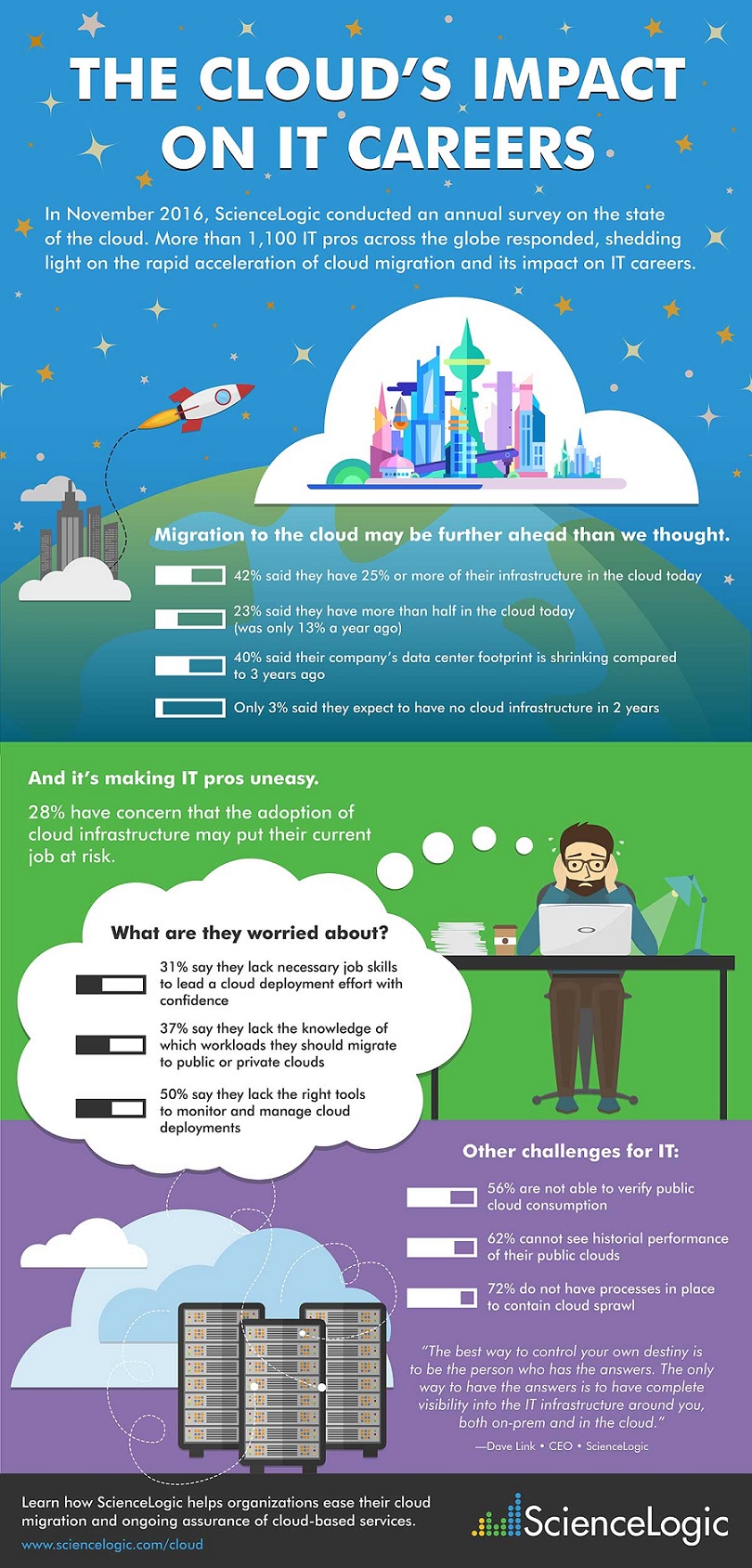
Almost One-Third (28 percent) of IT workers surveyed fear that cloud adoption is putting their job at risk, according to a survey of over 1,100 enterprise and MSP IT professionals conducted by ScienceLogic.
And 30 percent of IT workers feel improperly trained to lead cloud deployments, while half lack the right tools to monitor and manage cloud deployments. This is particularly alarming as survey data additionally suggests that cloud adoption is occurring at a faster pace than leading analysts projected.
"It's no secret that the cloud has fundamentally impacted business strategies," said Dave Link, CEO, ScienceLogic. "But it has also impacted the personal careers of IT professionals. It's forced them to rapidly adapt to new technologies and new mindsets that are often application centric vs infrastructure centric. Without the right professional development and tools to manage cloud adoption, they may find themselves disadvantaged."
Survey findings include:
■ 28 percent have concern that the adoption of cloud infrastructure may put their current job at risk
■ 31 percent say they lack necessary job skills to lead cloud deployment effort with confidence
■ 40 percent said their company's data center footprint is shrinking compared to 3 years ago
■ 42 percent said they have 25 percent or more of their infrastructure in cloud environments today (a 10 percent increase over one year's time)
■ 23 percent said they have more than half in the cloud today (a 10 percent increase over one year's time)
■ Only 3 percent said they expect to have no cloud infrastructure in 2 years
■ 50 percent say they lack the right tools to monitor and manage cloud deployments
■ 37 percent say they lack the knowledge of which workloads they should migrate to public or private clouds
Methodology: This survey was conducted by ScienceLogic with the goal of understanding the issues around public cloud adoption and how traditional IT infrastructure is changing. More than 1,100 IT professionals responded with 70 percent being from the Americas, 14 percent from Europe, Middle East, or Africa, and 16 percent from the Asia Pacific region. 54 percent of the respondents were enterprise businesses, 28 percent were service providers, and 18 percent government or public sector.

